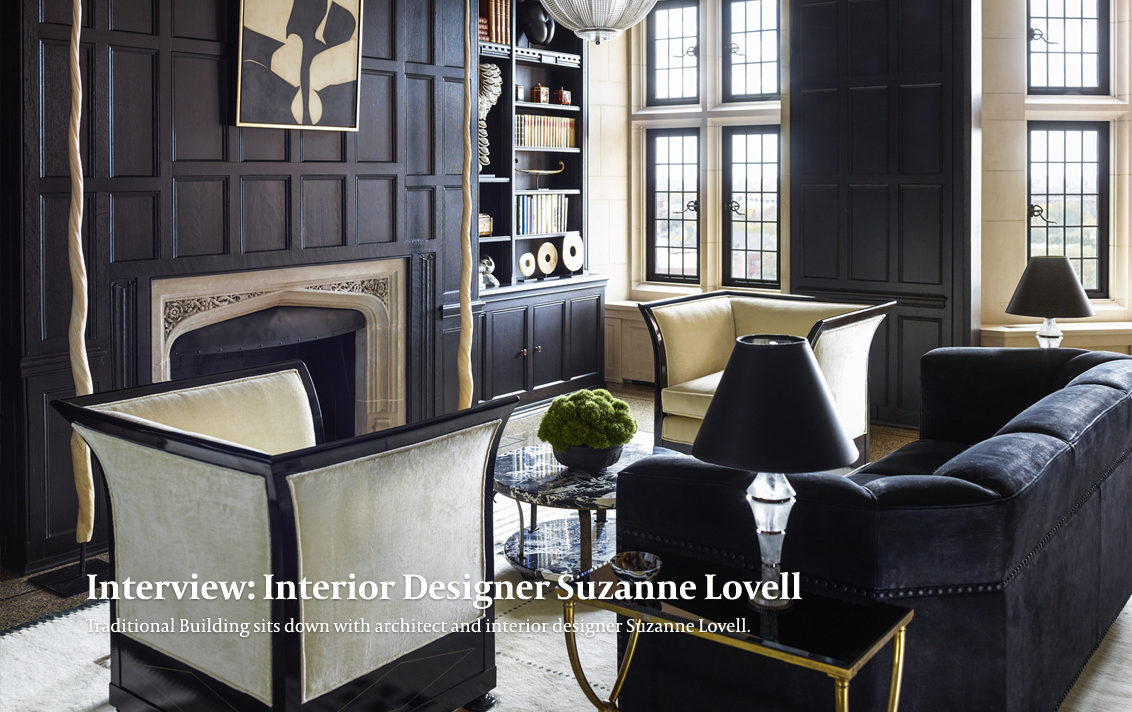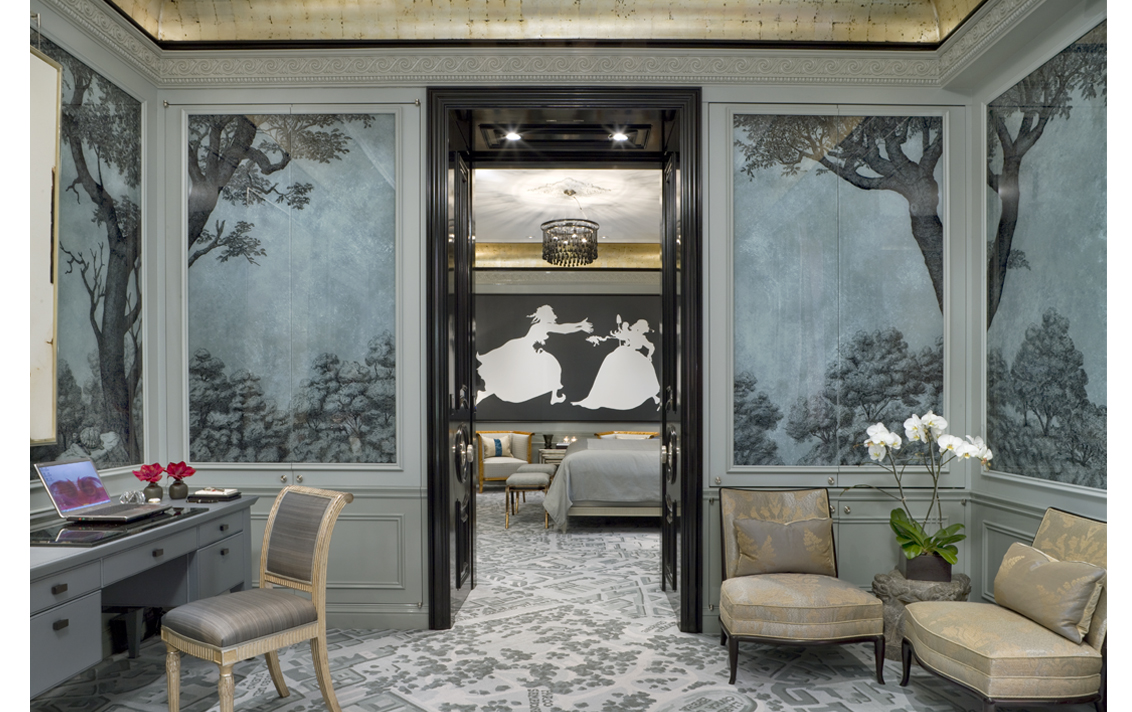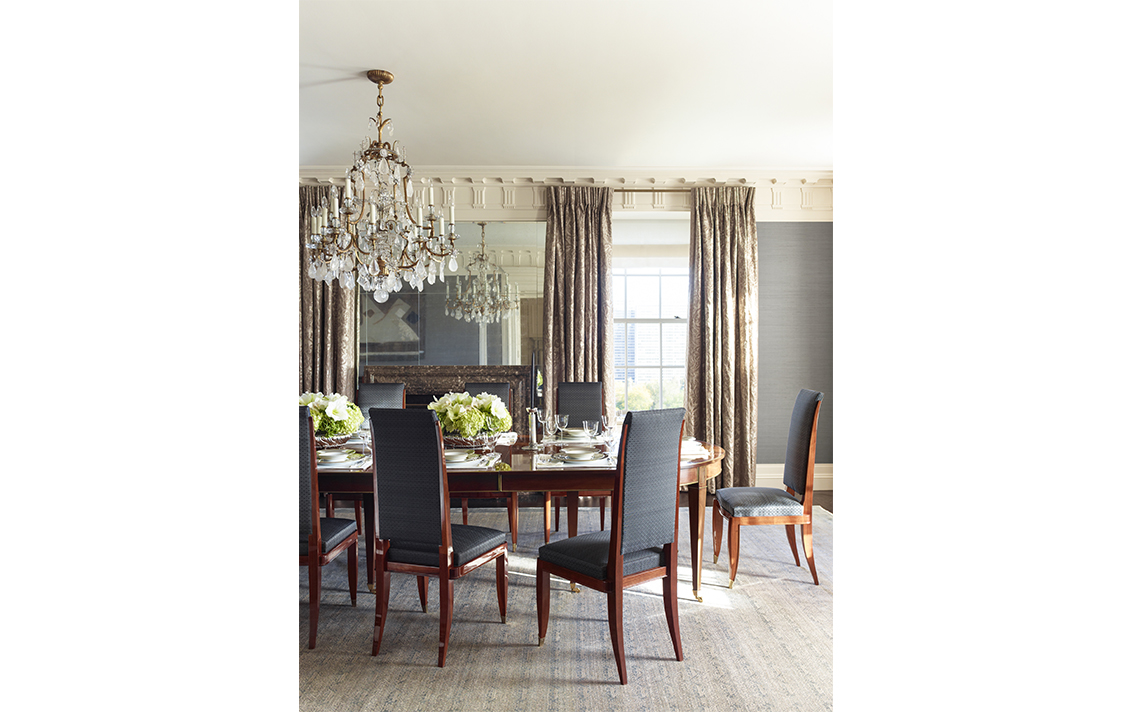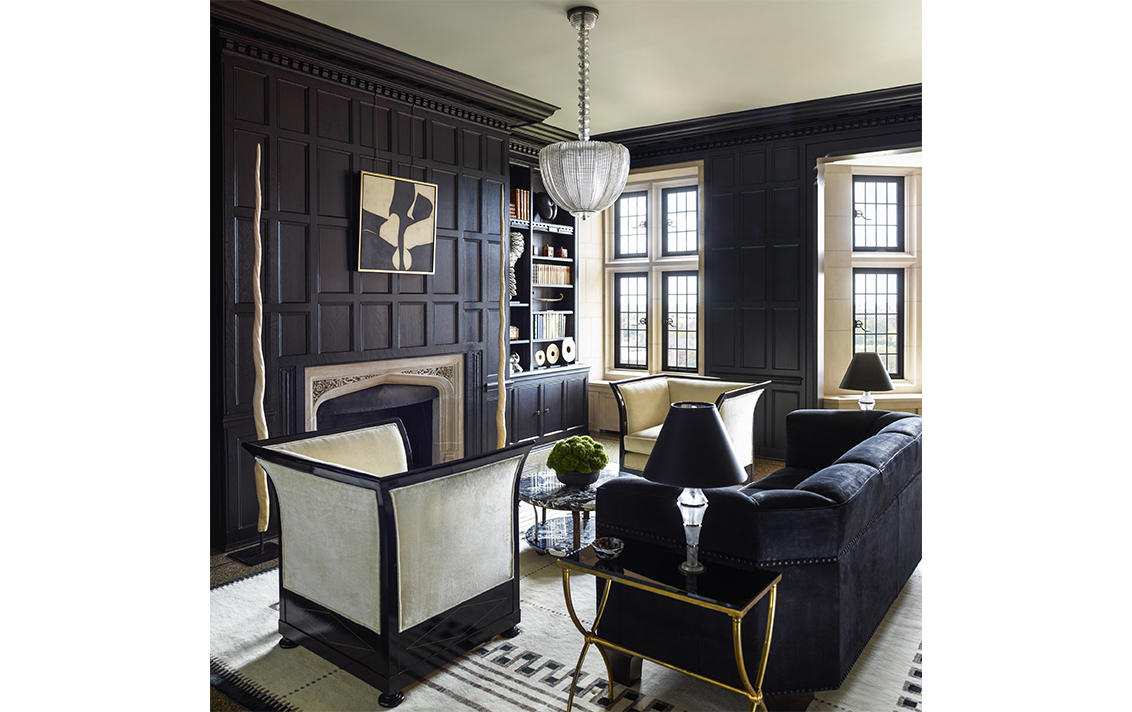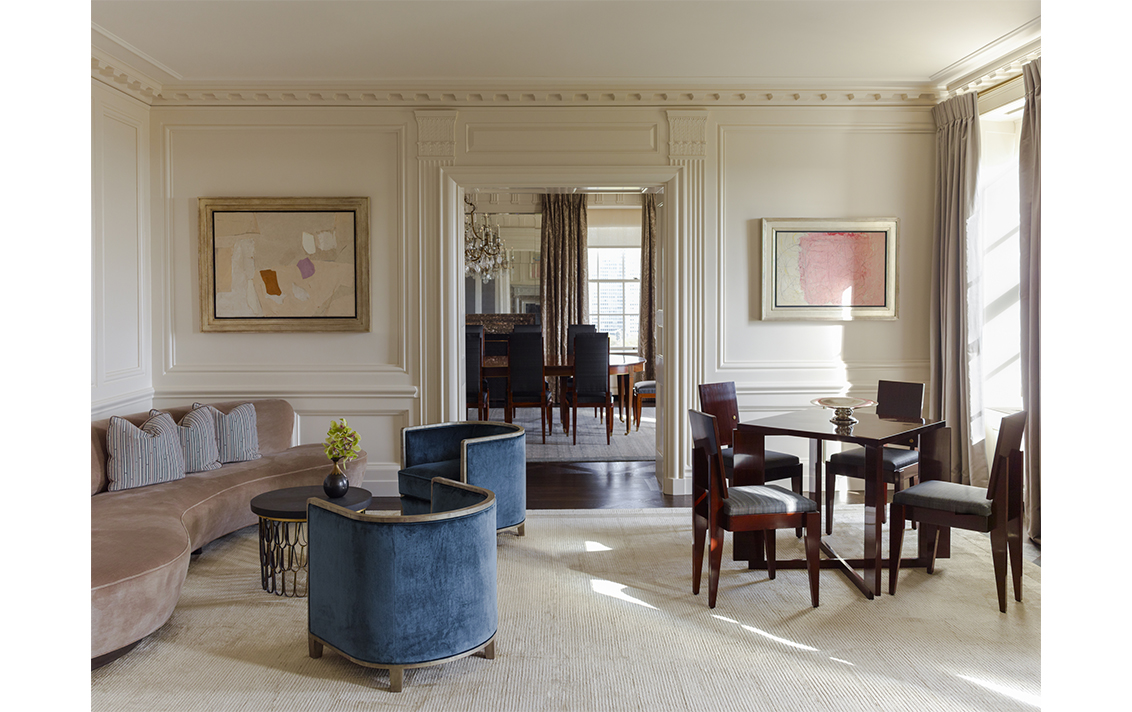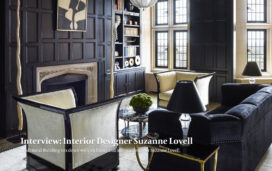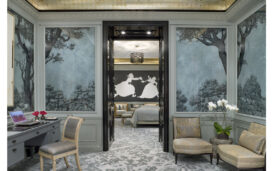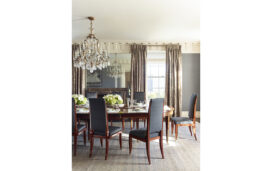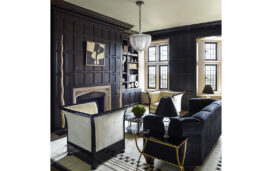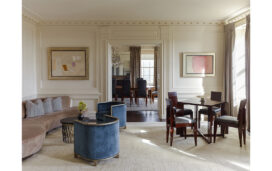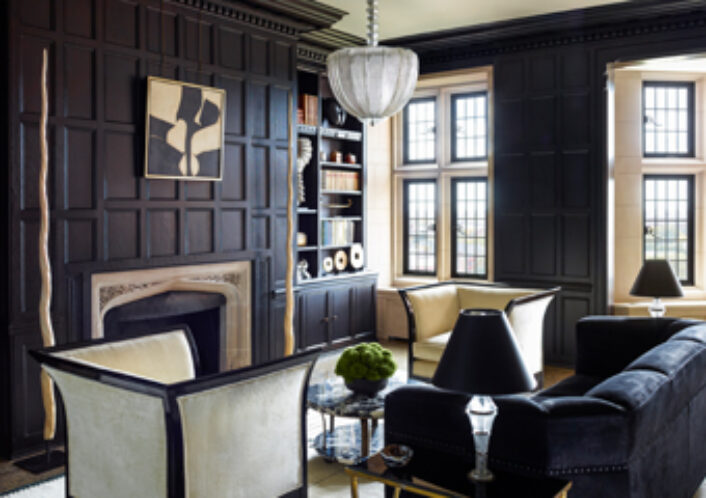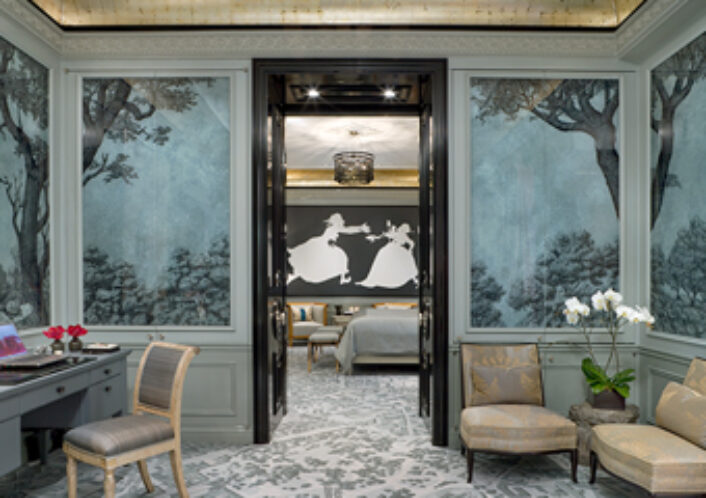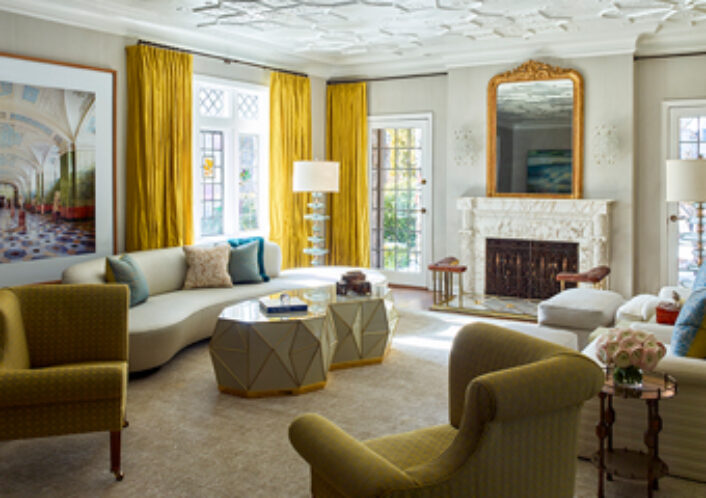Period Homes November 2020
Traditional Building sits down with architect and interior designer Suzanne Lovell.
Suzanne Lovell is a bonafide triple threat. An award-winning architect, interior designer, and part-time philosopher, Suzanne Lovell runs her eponymous firm creating couture residences that lean into contemporary art. From Gulf Coast penthouses and Lincoln Park homes to Manhattan pieds-à-terre, the common denominator is always art.
Lovell, with Fine Art Director Kristin Murphy Romanski, has worked hard cultivating relationships with art galleries, antique dealers and artisan furniture designers. They’ve put the time in at art exhibitions, shows, and galleries getting to know the artists and their work. Each piece that Lovell brings into a residence becomes part of an ongoing conversation on interior architecture, design, and the experience of fine art. Paintings by Cecily Brown and Kara Walker can be interwoven with traditional tansus and custom-made furniture by artisans like Joseph Walsh, all the while striking up a conversation on materials, perspective, lighting and, of course, details.
“What’s the story they want to tell, and what’s the dialog that we’re going to have inside the circulation of that piece of architecture? You are building a story for the client,” Lovell explains. “Our Clients are seeing, “Oh, there are all sorts of ways for me to tell my story.”
Storytelling comes in many shapes and styles for Lovell, who cherishes the blank palette of contemporary architecture. “The world has turned into so many different approaches to architecture, and there’s no specific container that all of architecture is fitting into: it’s all individualized. Architects need to be responsible for the interior architecture of a building as well as the exterior. This is the professional responsibility of the architect.”
Interior design, fine art, and architecture is the trifecta, and Lovell attributes intense and contemporaneous focus in all three areas to her time at Skidmore, Owings & Merrill, where she worked following her professional degree in architecture from Virginia Tech. “I fell in love with Skidmore when I was interning with them because it was the “real deal” of Miesian architecture, an ‘architectural boot camp’: training in detailing and the appropriate ways to integrate all architecture and interior design together.”
In her spare time—if there is any—Lovell is pursuing her Doctor of Philosophy in Architecture from Virginia Tech where she aims to elucidate on why interior architecture is so important to all architecture. It’s evident that it is more than passion—it’s a true calling for Lovell, who shares with us more.
Did you always know you wanted to work on interior and residential architecture?
“I fell in love with residential work when I was at Skidmore working on Rowes Wharf in Boston. I was designing three- and four-bedroom apartments. And I was thinking, “Oh my goodness, I love this level, this area of more human interaction.”
What’s it like working in Chicago with such a history of architects?
“Well, it’s a Mecca—a story, after story, after story of architecture. But you also have to remember, there’s a lot of bigotry between architects and interior architects. We have a hurdle to jump, and I hope I can help jump that hurdle.”
Fine art is core to your work. Who are some of your favorite artists?
“Marina Abramovic. Edmund de Waal. And, you know, there are makers like Joseph Walsh; there’s Junko Mori who makes steel vessels with incredible precision and detail. And, Sam Moyer: she’s making artwork with architectural materials and painting on canvases and merging them together. Gerhard Richter has studied the context of architecture, sculpture and paintings combined into a synthetic whole. That’s so cool!”
I was stumbling down the path of your website and your projects, I see penthouses, I see homes, I see apartments, I see yachts. What haven’t you done?
“I haven’t done a plane yet. That’s okay with me. But I do love every challenge!”
What has been your favorite challenge?
“There is a real complexity in shipbuilding. They take many years. I would say to you that one of the most fascinating moments I’ve ever had was at a shipyard near Amsterdam. [It was] huge. You’re walking on the superyacht as they’re building it, and there was an architectural diagram of the wiring that was inside the ship pinned to the wall: you could see in front of you the reality was exactly as it was in the complex drawings. That’s architecture, right there. That’s what it takes. Superyacht builders share the epitome of creating an architecture in which to experience the world.”
It seems that interior architecture is now front row thanks to the rise of remote working….
“Architecture of office buildings is going to change, and architecture of homes is going to change—at warp speed. We’re worrying about Zoom backdrops for our clients, literally: People are branding themselves. Their children have Zoom calls: where’s their space? How do you help your children understand and learn inside that box? When you’re at work and they’re at work, is the house set up correctly? …there’s a different set of questions that have to be answered.”
By Erica Firpo
